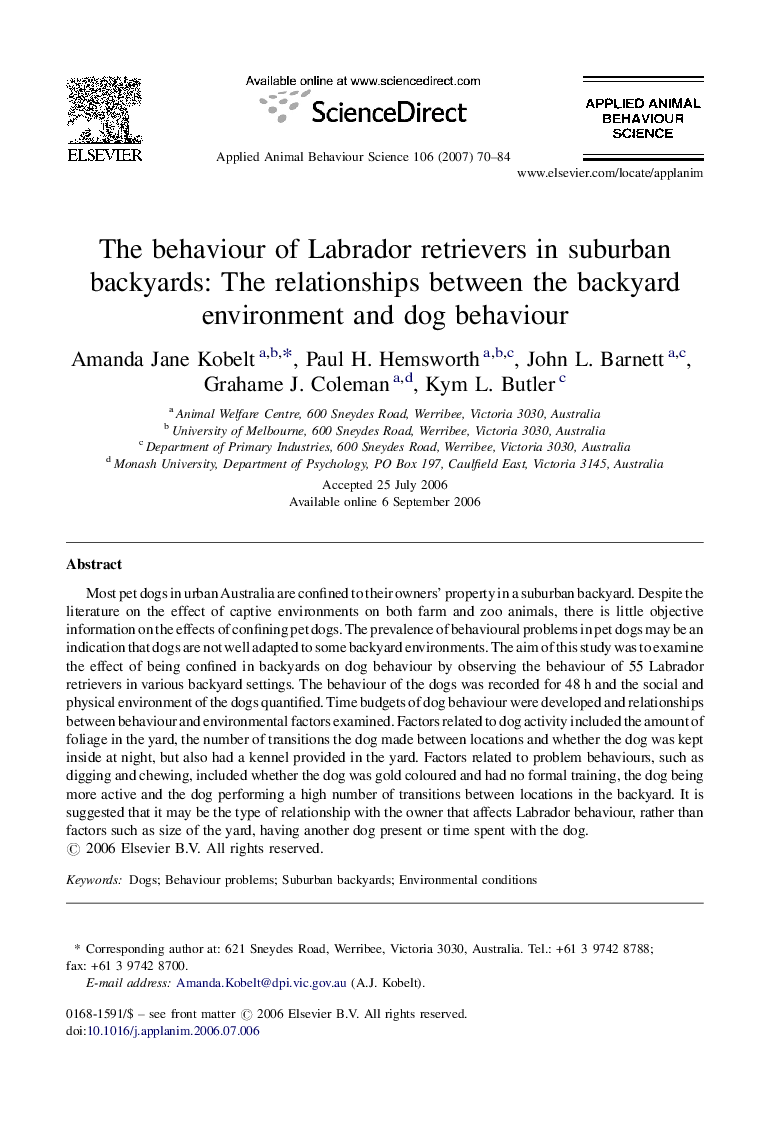| Article ID | Journal | Published Year | Pages | File Type |
|---|---|---|---|---|
| 4524161 | Applied Animal Behaviour Science | 2007 | 15 Pages |
Most pet dogs in urban Australia are confined to their owners’ property in a suburban backyard. Despite the literature on the effect of captive environments on both farm and zoo animals, there is little objective information on the effects of confining pet dogs. The prevalence of behavioural problems in pet dogs may be an indication that dogs are not well adapted to some backyard environments. The aim of this study was to examine the effect of being confined in backyards on dog behaviour by observing the behaviour of 55 Labrador retrievers in various backyard settings. The behaviour of the dogs was recorded for 48 h and the social and physical environment of the dogs quantified. Time budgets of dog behaviour were developed and relationships between behaviour and environmental factors examined. Factors related to dog activity included the amount of foliage in the yard, the number of transitions the dog made between locations and whether the dog was kept inside at night, but also had a kennel provided in the yard. Factors related to problem behaviours, such as digging and chewing, included whether the dog was gold coloured and had no formal training, the dog being more active and the dog performing a high number of transitions between locations in the backyard. It is suggested that it may be the type of relationship with the owner that affects Labrador behaviour, rather than factors such as size of the yard, having another dog present or time spent with the dog.
